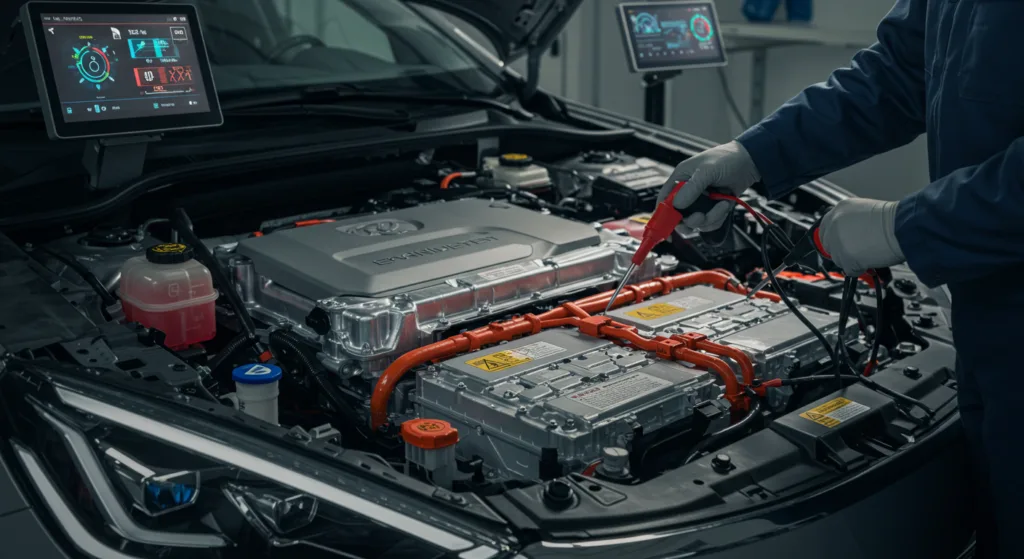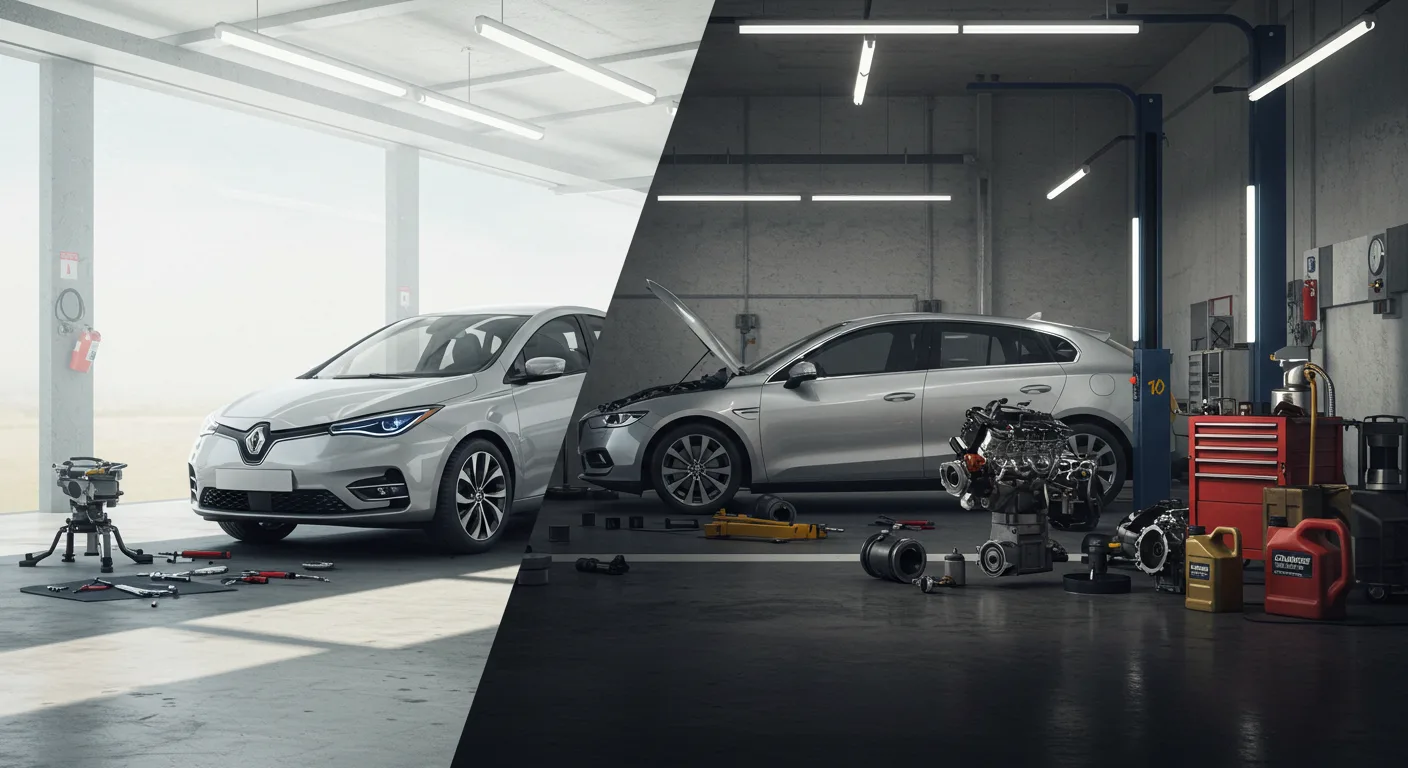1. Do Electric Cars Require More Maintenance Than Gas Cars?

EV’s are generally described as low-maintenance, and with good reason. EV’s have much fewer moving components than internal combustion engine vehicles. While a gasoline engine vehicle has over 2,000 components in its drivetrain, a vehicle that uses electricity as a fuel has fewer than 20. That reduces dramatically the number of components that wear out and break down.
In 2021, Consumer Reports put a figure on just how much money EV owners save on repairs and maintenance during a vehicle’s lifetime, at $4,600 compared with gasoline owners. That’s not a small margin—reality, actually, because there are no oil changes, no exhaust system, no timing belts, and no spark plugs.
When it comes to maintenance on a routine basis, EVs cancel out some of the most common, costly maintenance items. You will never have to worry about fuel filters, transmission maintenance, or having your oil changed, all common routine maintenance on a gasoline engine.
They do have some upkeep, however. Brake fluid will periodically have its level checked and, eventually, replaced, as will cabin air filters, and tires will deteriorate at a steady rate. Brake pads, however, due to regenerative braking, will have a much, much longer lifespan than on gasoline vehicles.
In short, electric cars require less maintenance—less often, and less money, for that matter. That smaller maintenance footprint is perhaps one of the strongest arguments for EV ownership.
2. What Are the Most Common Maintenance Issues with Electric Vehicles?

While EVs are less maintenance-intensive overall, that does not mean they are problem-free. Understanding the average maintenance needs can help first-time owners anticipate unexpected problems and allow them to lengthen the lifespan of their vehicle.
Battery Health
Most crucial among these components is the battery. While EV batteries are engineered to last—most are backed by an 8-year, 100,000-mile warranty—these batteries do lose some capacity with age. On average, a battery loses around 2.3% capacity each year, according to Geotab statistics. That would put a vehicle with a 250-mile range new at some point around 230 miles after five years.
Replacement batteries are expensive, generally ranging $5,000 to $15,000, depending on model and capacity. Aside from that, actual real-world battery replacements are non-existent for a 10-year owner experience.
Computer and electronics
New electric cars are basically computers on wheels. As such, they are susceptible to software glitches and over-the-road update problems. Nor are the following mechanical, yet they still have some effect on usability—like intermittent restarts of infotainment systems, for instance, or navigation system glitches.
Tire wear
Due to the torque that electric motors provide on-demand, tires also wear out faster—especially on sportier variants like the Tesla 3 or Ford Mustang Mach-E. You might have to swap a quality set every 20,000-30,000 miles as compared with 40,000+ on traditional ICEs.
Cooling Systems
EV batteries and electronics are sensitive to temperatures and thus liquids-cooled, as a rule, cooling systems must be serviced periodically. While much simpler than a radiator system on an ICE car, neglecting EV cooling can shorten battery life.
Charging Equipment
Home chargers also need maintenance. Wall units can deteriorate over time, and public charging port connectors can become worn or damaged. It doesn’t happen often, but it’s worth checking your equipment every now and then.
While all these do occur, they do not occur as frequently, are less costly, than typical engine problems such as a blown head gasket or a bad transmission. Software updates and repairs put EV’s back on the road.
3. How Much Does It Cost to Maintain an Electric Car Compared to a Gasoline Car?

When considering total cost, maintenance plays a giant role—and electric vehicles are where your focus should lie.
According to information from the Office of Energy Efficiency & Renewable Energy, U.S. Department of Energy, for a light-duty electric vehicle, the average maintenance cost per mile is $0.06, compared with $0.10 per mile for a conventionally fueled vehicle. That is a 40% savings on maintenance expense.
Let us solve into a real-case scenario:
Annual mileage: 12,000 miles
EV maintenance expense: 12,000 miles × $0.06 = $720 per
Gas car maintenance expense: 12,000 miles × $0.10 = $1,200/year
That is $2,400 saved over five years for a plug-in owner—before repairs saved through the inherent driveline simplicity of electric vehicles.
EV owners also eschew some of the costliest repairs that petrol cars experience, such as:
Transmission replacements: $3,000–$6,000
Engine rebuilds: $4,000–$7,000
Catalytic converter failures: $1,000–$2,500
Instead, owners of electric vehicles generally have lower, stable expenses including:
Replacement and Tire Rotations
Brake fluid replacements Periodic Battery Cooling System Maintenance It’s also worth noting that nearly all manufacturers, including Rivian and Tesla, implement over-the-air software updates for bug removal and performance improvement with a view toward lowering service center visits. Hence, although, on the one hand, one’s initial expense might be higher in some cases, maintenance expense will, on average, be less and steadier than for petrol vehicles. Hence, EVs will not only be cleaner as well as quieter, but also cheaper on a long-run basis.
Electric cars, as one would anticipate, have a lot to offer on the maintenance end of affairs—fewer moving parts, fewer service visits, and fewer costs further on down. While EV’s are hardly maintenance-free, their comparative hand-on-few-possible-else approach compared to gasoline-run cars translates into fewer unexpected repairs and less hassle all around. With technology getting better and charging points on the rise, owning a car that’s electric is not only smarter–less costly. For drivers wanting to save money and decrease their impact, the time is better than ever to switch.



